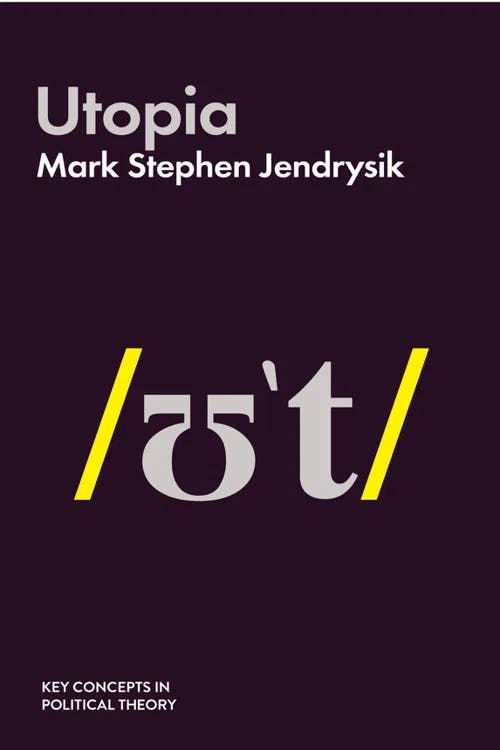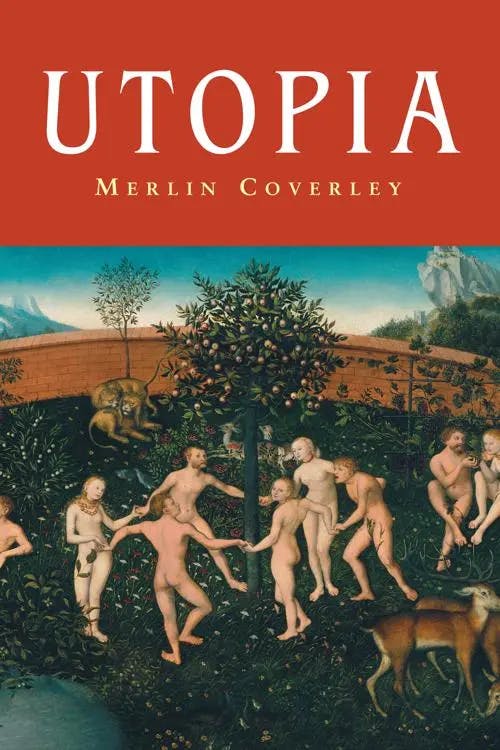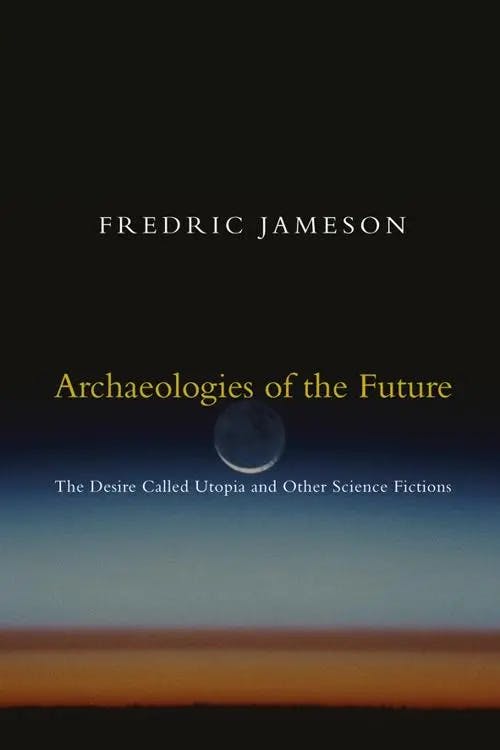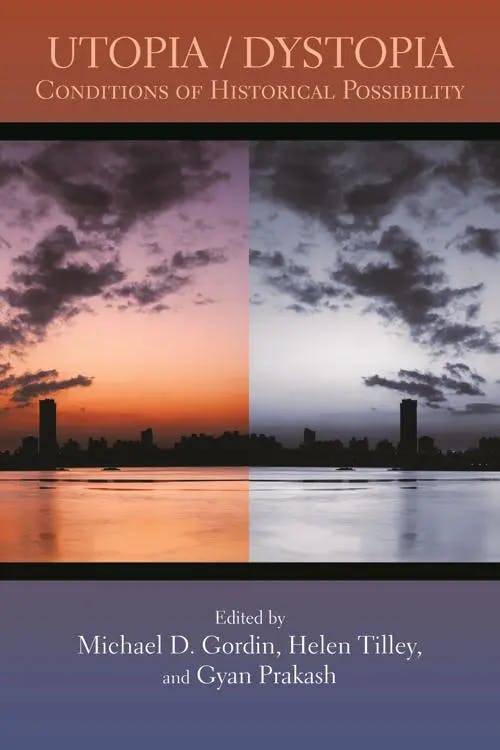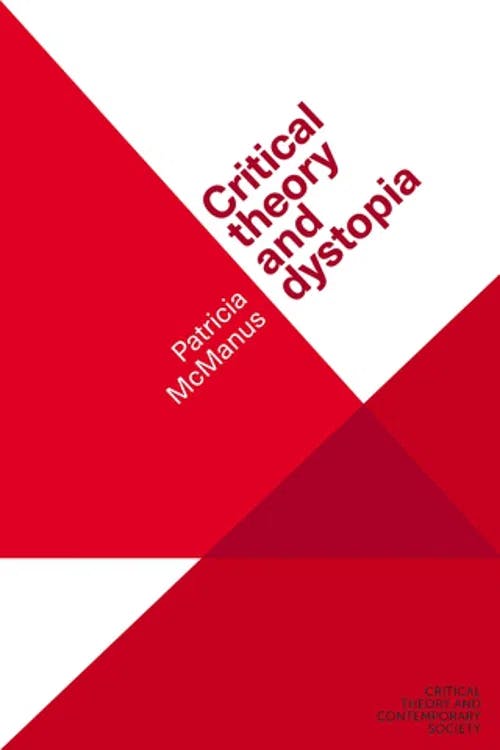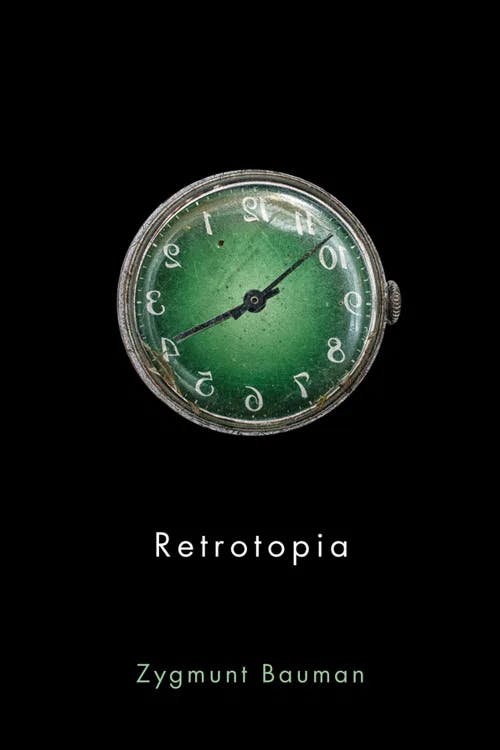Utopia vs. Dystopia - What’s the Difference?
MSt, Women's, Gender & Sexuality Studies (University of Oxford)
Date Published: 22.03.2023,
Last Updated: 19.07.2024
Share this article
What is a utopia?
“Utopia” is a play on words. It combines the Greek word topos (“place”) with the prefix “u,” simultaneously meaning eutopia (“good place”) and outopia (“no place”). This double meaning reveals both the truth and paradox of utopia. Utopia is “the good place that is no place” (Sargisson and Sargent, 2004, [2016]).
As Lyman Tower Sargent writes, a utopia is a “non-existent society described in considerable detail and normally located in time and space that the author intended a contemporaneous reader to view as considerably better than the society in which that reader lived” (2010). A utopia is a society that is better than contemporary society, but it does not exist here or yet. The pessimistic interpretation of this double meaning emphasizes outopia: one can dream of eutopia, but it will always remain an unrealized and unrealizable fantasy.
Thomas More introduced the term as the title of his 1516 book Utopia, considered the first utopian novel. More begins with a scathing satire of current English society before transporting readers to Utopia, an idyllic island with its own social, political, and economic structures. More embraces the ambiguity of the word utopia, offering no clear answer to whether utopia is an attainable reality or an unreachable dream. Mark Stephen Jendrysik emphasizes another layered aspect of the text:
More’s Utopia was not just a savage critique of the injustices of his times. Nor was it simply speculation about a state that, if made real, would create a just community. More’s work was also a lighthearted entertainment for his friends. [...] If utopia is a desire or a dream, More reminds us to approach it with a light heart. (Utopia, 2020)
Mark Stephen Jendrysik
More’s Utopia was not just a savage critique of the injustices of his times. Nor was it simply speculation about a state that, if made real, would create a just community. More’s work was also a lighthearted entertainment for his friends. [...] If utopia is a desire or a dream, More reminds us to approach it with a light heart. (Utopia, 2020)
Whether charming dreams or serious visions, utopias all begin with the understanding that there is something lacking in current society and something better can be imagined. In common and scholarly uses of “utopia,” there sometimes surfaces an assumption that utopian means perfect. While certainly utopias strive for a more perfect world, Sargent takes issue with placing the burden of perfection on utopias. He argues that “perfection has never been a characteristic of utopian fiction” — More’s Utopia itself was not perfect (1994). Jendrysik sees utopia as a continuum, with “efforts at reform” at one end and “the complete overhaul of society” at the other. Utopias are better worlds, but they are not flawless ones.
Types of utopias
Scholars struggle to define utopia. Is every story about a seemingly good fictional place a utopian one? How do we determine whether the society is “good” — is this based on the author’s intentions, or our experience reading the text? How do we categorize intentional communities, utopian experiments that claim to be “real” utopias?
Sargent proposes that there are three faces of utopia: literary works, intentional communities, and social/political theory. Though distinguishable, the three faces of utopia heavily inform each other. Social and political theory influences the goals of intentional communities; political thinkers advance their ideas through fiction. Here, we examine and provide a brief history of each type of utopia.
Literary works
Although More’s Utopia is the first utopian novel, utopian ideas have been present in storytelling traditions for thousands of years. Almost every culture has developed some mythic utopia, from Eden to the Greek Golden Age — a long ago period of harmony and abundance described by Hesiod in Works and Days (c. 8th–9th century BCE). These mythic utopias looked backward to a lost arcadia or forward to a future paradise after an apocalypse or beyond death. Sargent calls these utopias “body utopias”; they are grounded in sensual gratification rather than societal structures; the utopia is supplied by nature and/or the gods, not constructed by man.
Man-made utopias, on the other hand, are what Sargent calls “city utopias.” The most cited early example of a city utopia is Plato’s Republic (c. 375 BCE). Plato seeks to define justice by imagining the ideal city-state, grappling with questions utopians to the present day continue to explore: What does a just state look like? What structures of government would be needed to create such a state? What would be prohibited in order to maintain it? (Plato bans dramatic poetry from his ideal republic, for example.)
More’s Utopia marked a shift from the ancient world’s treatment of literary utopias. Rather than envisioning a paradise of the far past or a heaven in the distant future, More and his imitators placed utopia in the present. Merlin Coverley writes in Utopia (2012) that authors of the early modern utopian revival inserted historical facts and supporting materials like maps and letters to make their creations seem credible:
Utopias had always been a reflection of the societies that had produced them, but the border between fact and fiction was now less clear than ever before, as utopia became, for the first time, a plausible and fully realised destination.
Merlin Coverley
Utopias had always been a reflection of the societies that had produced them, but the border between fact and fiction was now less clear than ever before, as utopia became, for the first time, a plausible and fully realised destination.
Notable literary utopias following More include Tommaso Campanella’s City of the Sun (completed 1602, first published 1623), Francis Bacon’s New Atlantis (1627), and Margaret Cavendish’s The Blazing World (1666), the first recorded English utopia by a female writer.
In the eighteenth century, European literary utopias often depicted voyages to faraway lands, only to discover reflections of contemporary European society and offer more overt critiques of contemporary society than earlier utopias. Notable works of this era include Jonathan Swift’s Gulliver’s Travels (1726), Voltaire’s Candide (1759), and Daniel Defoe’s Robinson Crusoe (1719), although Sargent argues there is no utopia here because there is no society.
The nineteenth century witnessed rapid changes like the dominance of industrial capitalism, experiments with utopian living communities, the spread of new technologies, vast and unequal increases in wealth, and disruptions to traditional family structures, gender roles, and modes of labor. Predictions for the future abounded, ranging from Marxian socialism to theories of social Darwinism. In 1888, American novelist Edward Bellamy published Looking Backward: 2000–1887, the story of a Bostonian who travels 113 years into a utopian future. Looking Backward became one of the most successful novels of the century. Michael Robertson writes in The Last Utopians,
the book initiated a vogue for utopian fiction that continued for the next twenty-five years. More English-language utopian works — over five hundred — were published in the quarter-century following the appearance of Bellamy’s novel than had appeared in the nearly four hundred years between More and Bellamy. (2018)
Michael Robertson
the book initiated a vogue for utopian fiction that continued for the next twenty-five years. More English-language utopian works — over five hundred — were published in the quarter-century following the appearance of Bellamy’s novel than had appeared in the nearly four hundred years between More and Bellamy. (2018)
Responding to Bellamy’s depiction of the benefits of technological progress, William Morris published News from Nowhere (1890), a vision of pastoral England freed from industrial horrors. Meanwhile, Charlotte Perkins Gilman penned a series of utopian writings including Herland (1915), depicting an ideal society without men.
The horrors of the twentieth century significantly impacted utopian writing. The nightmarish possibilities of world wars, totalitarian regimes, and technological advancements colored visions of the future; the atrocities committed in the name of utopian visions undermined any depiction of an “ideal society.” While some works still attempted a utopian project — B. F. Skinner’s Walden Two (1948), Aldous Huxley’s Island (1962), Ernest Callenbach’s Ecotopia (1975) — the twentieth century quickly became rife with dystopias and anti-utopias.
Intentional communities
Sargent defines an intentional community — once called a utopian experiment — as “a group of five or more adults and their children, if any, who come from more than one nuclear family and who have chosen to live together to enhance their shared values or for some other mutually agreed upon purpose” (1994). The nineteenth century saw an increase in such communities as like-minded individuals attempted to create their own utopias by separating themselves from broader society and adopting shared values or goals. Brook Farm was one of the most famous of these experiments because of its connections to the transcendentalist movement in the US. It was founded by well-known Unitarian minister George Ripley and his wife, Sophia Ripley, and Nathaniel Hawthorne was a founding member. Another commonly cited American example is the Oneida Community, a Christian community founded in New York which practiced group marriage, communalism, and male sexual continence. Although these groups are associated with the nineteenth century, they continue to the present day in various forms, secular and religious. See Lucy Sargisson and Lyman Tower Sargent’s Living in Utopia: New Zealand's Intentional Communities (2004, [2016]) for more on these communities and New Zealand’s specific relevance in utopian history.
Social/political theory
Sargent would argue that humanity’s first utopian impulses lie in myths of body utopias, free from political structures, but Jendrysik frames utopia differently:
Utopia begins with politics. Utopia might not end with politics, but the nature of political life, the distribution of power among individuals and in society, and the legitimacy of authority over the community lie at the heart of utopian thought. (2020)
This statement rings right for city utopias, intentional communities, and social/political theory, if not also for body utopias (is the dream of a paradise without politics itself a political dream?).
Political theory has long sought to envision a vastly improved society. Plato’s Laws (c. 360 BCE) grapples with the difficulties of creating a constitution for a new colony. The Communist Manifesto (1848) envisions a better world and the next stage of human development. However, utopian theory — examining utopia as a concept rather than proposing a plan for a utopia — only began in the twentieth century. Karl Mannheim differentiated ideology from utopia. Both were mental constructs, “fictive activities,” but ideology maintained existing structures while utopias tended to “shatter, either partially or wholly, the order of things prevailing at the time” (Ideology and Utopia, 1936, [2000]).
Utopian thinker Ernst Bloch posits that a utopian impulse drives everything future-oriented in life and culture, “encompassing everything from games to patent medicines, from myths to mass entertainment, from iconography to technology, from architecture to eros, from tourism to jokes and the unconscious” (Jameson, 2007).
Responding to Bloch’s theories, Fredric Jameson argues in Archaeologies of the Future that there are two lines of descent from More’s Utopia: “the one intent on the realization of the Utopian program, the other an obscure yet omnipresent Utopian impulse finding its way to the surface in a variety of covert expressions and practices” (2007). This first line is systemic; it encompasses revolutionary political practice, literary utopias, and intentional communities — Sargent’s three faces of utopia. The other line of descent is “more obscure and more various”:
liberal reforms and commercial pipedreams, the deceptive yet tempting swindles of the here and now, where Utopia serves as the mere lure and bait for ideology [...]. Still, perhaps a few of the more obvious forms can be identified: political and social theory, for example, even when – especially when – it aims at realism and at the eschewal of everything Utopian; piecemeal social democratic and “liberal” reforms as well, when they are merely allegorical of a wholesale transformation of the social totality. (2007)
Fredric Jameson
liberal reforms and commercial pipedreams, the deceptive yet tempting swindles of the here and now, where Utopia serves as the mere lure and bait for ideology [...]. Still, perhaps a few of the more obvious forms can be identified: political and social theory, for example, even when – especially when – it aims at realism and at the eschewal of everything Utopian; piecemeal social democratic and “liberal” reforms as well, when they are merely allegorical of a wholesale transformation of the social totality. (2007)
In short, Jameson sees two sides of utopia: self-conscious efforts toward a utopian form and an at times repressed or unconscious utopian impulse.
What is a dystopia?
Hearing “dystopia,” we likely think of any number of popular narratives, from Suzanne Collins’ The Hunger Games (2008) to Westworld (Joy and Nolan, 2016–2022). Dystopias are everywhere, perhaps because our own reality is increasingly dystopian. But what does dystopia really mean? How does it relate to utopia and how do we tell the two apart?
While “utopia” contains two meanings, “dystopia” is deceptively simple, literally meaning “bad place.” If a utopia is a fictional world that is better than the one we live in now, a dystopia is one that is worse.
But dystopia is not simply the opposite of utopia. Anti-utopia is sometimes offered as a synonym for dystopia, but Sargent differentiates these terms: an anti-utopia uses “the utopian form to attack either utopias in general or a specific utopia” (1994). Dystopias do not necessarily critique the utopian impulse, and several works responding to Bellamy, for example, critique his specific utopian vision without being dystopian.
Michael D. Gordin, Helen Tilley, and Gyan Prakash argue in Utopia/Dystopia: Conditions of Historical Possibility (2010),
A true opposite of utopia would be a society that is either completely unplanned or is planned to be deliberately terrifying and awful. Dystopia, typically invoked, is neither of these things; rather, it is a utopia that has gone wrong, or a utopia that functions only for a particular segment of society.
Michael D. Gordin, Helen Tilley, Gyan Prakash, Michael Gordin, Helen Tilley, Gyan Prakash
A true opposite of utopia would be a society that is either completely unplanned or is planned to be deliberately terrifying and awful. Dystopia, typically invoked, is neither of these things; rather, it is a utopia that has gone wrong, or a utopia that functions only for a particular segment of society.
Most utopias and dystopias begin with an impulse to create a better society. Of course, “there are many more ways [...] to generate dystopia than utopia”: “Every utopia always comes with its implied dystopia — whether the dystopia of the status quo, which the utopia is engineered to address, or a dystopia found in the way this specific utopia corrupts itself in practice” (Gordin, Tilley, and Prakash, 2010). It is fitting that the word dystopia only came into use to describe a type of literature in the mid-twentieth century, when utopian thinking itself was faltering.
Utopias have never been perfect. One generation’s utopia is often the next’s dystopia. In the regulation of artistic production in Plato’s ideal republic, or the harsh punishments for premarital sex and adultery in More’s Utopia, we see how a utopia for one can be a dystopia for another. Security can look like control, freedom like chaos. So how do we tell the difference between utopias and dystopias?
Sargent points toward the author’s intentions as a deciding factor: did the writer intend for this society to be read as better or worse than the society they were living in? Of course, authorial intention is difficult to determine, and it can be at odds with the text itself. For example, H. G. Wells’ A Modern Utopia (1905) was intended to represent a genuinely ideal society. However, Wells’ World State embraces the hallmarks of many dystopian regimes like constant surveillance, control of sexual activity and marriage, and eugenics. To our eyes, and perhaps to the eyes of Wells’ contemporary readers, A Modern Utopia looks decidedly dystopian.
In Critical Theory and Dystopia (2022), Patricia McManus locates a difference between utopian and dystopian fiction on a narrative and formal level. Utopian fiction traditionally includes some sort of “explanatory framework” which allows the new world to be “inaugurated, peered over, understood” (McManus, 2022). More’s protagonist travels from contemporary England to an island; Bellamy’s protagonist time travels over a century into the future. Dystopia, on the other hand, “takes a much more narratively dangerous route”: it plunges the reader into a world which has long been “dystopian” and provides no outsider to “guide” the reader through the shift (McManus, 2022). The dystopian future is all there is, the past vague or lost altogether. The reader has “no textual present when she reads”:
she is addressed by the dystopian text as someone who is in this new world as it is experienced rather than experiencing it from the reports of fictional witnesses to whom it also might have come as a novel or shocking place. (McManus, 2022)
Patricia McManus
she is addressed by the dystopian text as someone who is in this new world as it is experienced rather than experiencing it from the reports of fictional witnesses to whom it also might have come as a novel or shocking place. (McManus, 2022)
With no outside perspective to provide commentary on the society we encounter, we must mirror the dystopian protagonist’s own journey of awakening: “Plot rather than pedagogy serves as the narrative backbone” (McManus, 2022).
Dystopias begin with habit or familiarization: for the dystopian inhabitant, the dreadful is just their daily routine. As the inhabitant realizes the nature of the dystopian regime and becomes estranged from their world, the reader is gradually given textual space to mirror their own estrangement from the dystopian regime. However, there is “never a textual space opened for the evaluation of the regime from the perspective of the present” (McManus, 2022).
Dystopian fiction can also be identified by a number of recurring themes — forms of mass surveillance, restrictions on freedom of movement, state control of family structures/sexual activity/romantic relationships, forced conformity, government manipulation of historical records/the truth. Dystopian literature often explores feelings of alienation, identity loss, isolation, timelessness, and the benefits and dangers of freedom.
Classic examples of dystopian literature include Jack London’s The Iron Heel (1908), Yevgeny Zamyatin’s We (first published in English in 1924), Aldous Huxley’s Brave New World (1932), George Orwell’s 1984 (1949), and Ray Bradbury’s Fahrenheit 451 (1953). Ursula K. Le Guin’s writings exhibit dystopian, utopian, and critical utopian impulses; The Dispossessed (1974) bears the tagline and subtitle “an ambiguous utopia,” and her short story “The Ones Who Walk Away from Omelas” (1973) depicts a society whose perfection relies on the perpetual misery of a single child. Margaret Atwood is famous for her dystopian fiction, such as the MaddAddam trilogy (2003–2013) and The Handmaid’s Tale (1985), while Lois Lowry’s The Giver (1993) and Kazuo Ishiguro’s Never Let Me Go (2005) depict more quietly sinister dystopias. (For more, you can explore our study guide on speculative fiction — a genre which encompasses both utopian and dystopian fiction.)
While utopias can critique current societies, dystopias provide a warning or rebuke to the present through a vision of the future that awaits us if we do not change. As Gordin, Tilley, and Prakash argue, dystopia “bears the aspect of lived experience”:
Whereas utopia takes us into a future and serves to indict the present, dystopia places us directly in a dark and depressing reality, conjuring up a terrifying future if we do not recognize and treat its symptoms in the here and now. (2010)
Key differences between utopias and dystopias
To summarize, here are the key differences between utopias and dystopias:
- Authorial intent: Writers of utopias intend to depict a society that appears better than the one we live in now, while writers of dystopia aim to imagine worlds that are worse. Dystopian writers often do this by drawing attention to or exaggerating flaws within our current society.
- Narrative style: Utopias tend to employ a frame narrative involving a guide for the reader who travels in space or time to another society. Dystopias tend to begin with habit or familiarization, plunging the reader directly into the world and treating dystopian details as commonplace. The reader’s journey mirrors the dystopian inhabitant’s estrangement from their world.
- Themes: Utopias emphasize hope, harmony, abundance, possibility, peace. Dystopias emphasize fear, isolation, surveillance, control, manipulation.
- Dream vs. warning: Utopias imagine a better future, sometimes completely unlike the present. Dystopias respond to our current society and serve as cautionary lessons; dystopian authors present us with a future (or even a version of the present) that they believe we must change or work to avoid.
Uses of utopia/dystopia today
Since dystopia’s rise and utopia’s fall in the wake of twentieth century horrors, our times seem increasingly anti-utopian. The climate crisis promises an end to the world as we know it. Technological advancements, such as the rise of AI, often elicit more horror than excitement. Even space seems not a promised paradise, but just another frontier for billionaires to conquer.
When Francis Fukuyama declared “the end of history” in 1989, he proclaimed the utopia achieved: liberal democracy and capitalism represented the final stage of development. However, for scholars like Jameson and Mark Fisher, capitalism without end is the true dystopian nightmare, and it has become increasingly difficult to dream of a realistic alternative.
Perhaps in defiance of its promised death, utopia is having a renaissance. Utopian and dystopian literature marketed toward young adults is flourishing, providing visions of the future in which young heroes overthrow oppressive regimes. The utopian dream is not yet dead for the younger generations.
Meanwhile, Zygmunt Bauman identifies nostalgia as a key feature in contemporary utopias. In Retrotopia (2017), he describes the proliferation of utopian “visions located in the lost/stolen/abandoned but undead past”:
True to the utopian spirit, retrotopia derives its stimulus from the hope of reconciling, at long last, security with freedom: the feat that both the original vision and its first negation didn’t try – or, having attempted, failed – to attain.
Zygmunt Bauman
True to the utopian spirit, retrotopia derives its stimulus from the hope of reconciling, at long last, security with freedom: the feat that both the original vision and its first negation didn’t try – or, having attempted, failed – to attain.
Retrotopian ideas undergird political discourse harkening back to the “good old days” or “traditional values”; the power of retrotopian ideas is evidenced in the rise of ISIS, European neo-fascists, the American alt-right, and Donald Trump, with his promise to “make American great again” (Jendrysik, 2020).
On the other hand, utopian thinking remains fertile ground for theories of liberation. As Alex Zamalin illustrates in Black Utopia (2019), Black utopian thinking has a long history of envisioning futures beyond white supremacy. With movies like Black Panther (2018), Afrofuturism and other speculative imaginings of Black futures are having a cultural moment (see Jayna Brown’s Black Utopias [2021]). Queer theory is also rethinking the promises of utopia. While one arm of queer theory eschews the future, queer utopian thinking also thrives, inspired by José Esteban Muñoz’s influential Cruising Utopia: The Then and There of Queer Futurity (2009 [2019]). Jill Dolan finds Utopia in Performance (2005), while Michel Foucault’s concept of a heterotopia (meaning “other place” or “out of place”) has gained increasing scholarly attention. Foucault describes a heterotopia as a place that, unlike a utopia, does exist, but as a “counter-site,” “a kind of effectively enacted utopia” in which all other cultural sites are “simultaneously represented, contested, and inverted” — privileged, sacred, or forbidden places that exist outside of traditional time (“Of Other Spaces: Utopias and Heterotopias,” 1986).
While recognizing utopian thinking as dangerous and prone to misuse, we can also see how the utopian impulse is a powerful and necessary one. In a moment when the future seems fixed, utopians can dream of alternatives. As Jameson writes,
Utopian form is itself a representational meditation on radical difference, radical otherness, and on the systemic nature of the social totality, to the point where one cannot imagine any fundamental change in our social existence which has not first thrown off Utopian visions like so many sparks from a comet. (2007)
To envision a future that is better than the world we live in now is itself a powerful act. To engage fully in utopian thinking — boldly, imaginatively, expansively — could radically change the world.
Further reading on Perlego
Utopia, edited by David Ayers, Benedikt Hjartarson, Tomi Huttunen, Harri Veivo, David Ayers, Benedikt Hjartarson, Tomi Huttunen, Harri Veivo
Utopianism for a Dying Planet: Life after Consumerism by Gregory Claeys
Rethinking Utopia: Place, Power, Affect by David Bell
Utopias of One by Joshua Kotin
Journey through Utopia by Marie Louise Berneri
Utopian Literature and Science: From the Scientific Revolution to Brave New World and Beyond by Patrick Parrinder
What is a utopia in simple terms?
What is a dystopia in simple terms?
What is the difference between utopia and dystopia?
What are some good examples of utopias?
What are some good examples of dystopias?
Bibliography
Atwood, M. (2017). The Handmaid’s Tale. Penguin Random House.
Bacon, F. (2016) The New Atlantis. Jazzybee Verlag. Available at: https://www.perlego.com/book/1071446/the-new-atlantis-pdf.
Bauman, Z. (2017) Retrotopia. Polity Press. Available at: https://www.perlego.com/book/1536355/retrotopia-pdf.
Bellamy, E. (2016) Looking Backward: 2000–1887. Wisehouse Classics. Available at: https://www.perlego.com/book/1415529/looking-backward-2000-to-1887-wisehouse-classics-edition-pdf.
Black Panther (2018) Directed by Ryan Coogler. Available at: Disney+.
Bloch, E. (1995) The Principle of Hope, trans. N. Plaice, S. Plaice, and P. Knight. MIT Press.
Bradbury, R. (2011) Fahrenheit 451. Simon & Schuster. Available at: https://www.perlego.com/book/779391/fahrenheit-451-a-novel-pdf.
Brown, J. (2021) Black Utopias: Speculative Life and the Music of Other Worlds. Duke University Press. Available at: https://www.perlego.com/book/2397395/black-utopias-speculative-life-and-the-music-of-other-worlds-pdf.
Callenbach, E. (1990) Ecotopia. Bantam.
Campanella, T. (2021) The City of the Sun. Mint Editions. Available at: https://www.perlego.com/book/3026622/the-city-of-the-sun-pdf.
Cavendish, M. (2020) The Blazing World. Mint Editions. Available at: https://www.perlego.com/book/2359928/the-blazing-world-pdf.
Coverley, M. (2012) Utopia. Ebook edition. Pocket Essentials. Available at: https://www.perlego.com/book/1707423/utopia-pdf.
Defoe, D. (2010) Robinson Crusoe. HarperCollins Publishers. Available at: https://www.perlego.com/book/669633/robinson-crusoe-pdf.
Dolan, J. (2005) Utopia in Performance: Finding Hope at the Theater. University of Michigan Press.
Edelman, L. (2004) No Future: Queer Theory and the Death Drive. Duke University Press. Available at: https://www.perlego.com/book/1466119/no-future-queer-theory-and-the-death-drive-pdf.
Fisher, M. (2009) Capitalist Realism: Is There No Alternative? John Hunt Publishing.
Foucault, M. (1986) “Of Other Spaces: Utopias and Heterotopias,” trans. J. Miskowiec, Diacritics 16(1), pp. 22–27. Available at: https://web.mit.edu/allanmc/www/foucault1.pdf.
Francis, R. (2018) Transcendental Utopias: Individual and Community at Brook Farm, Fruitlands, and Walden. Cornell University Press. Available at: https://www.perlego.com/book/1351035/transcendental-utopias-individual-and-community-at-brook-farm-fruitlands-and-walden-pdf.
Fukuyama, F. (2006) The End of History and the Last Man. Free Press. Available at: https://www.perlego.com/book/780488/end-of-history-and-the-last-man-pdf.
Gilman, C. P. (2012) Herland. Dover Publications. Available at: https://www.perlego.com/book/110257/herland-pdf.
Gordin, M., Tilley, H. and Prakash, G. (2010) Utopia/Dystopia: Conditions of Historical Possibility. Princeton University Press. Available at: https://www.perlego.com/book/734848/utopiadystopia-conditions-of-historical-possibility-pdf.
Hesiod (2017) The Poems of Hesiod, trans. B. B. Powell. University of California Press. Available at: https://www.perlego.com/book/551202/the-poems-of-hesiod-pdf.
Huxley, A. (2017) Brave New World. Harper.
Huxley, A. (2016) Island. Vintage Classics.
Ishiguro, K. (2006) Never Let Me Go. Vintage.
Jameson, F. (2007). Archaeologies of the Future: The Desire Called Utopia and Other Science Fictions. Verso Books. Available at: https://www.perlego.com/book/3785880/archaeologies-of-the-future-the-desire-called-utopia-and-other-science-fictions-pdf.
Jendrysik, M. S. (2020) Utopia. Polity Press. Available at: https://www.perlego.com/book/1536676/utopia-pdf.
Kumar, K. and Bann, S. (1997) Utopias and the Millennium. Reaktion Books. Available at: https://www.perlego.com/book/791929/utopias-and-the-millennium-pdf.
Le Guin, U. K. (2014) The Dispossessed. Harper Perennial Modern Classics.
Le Guin, U. K. (2017) “The Ones Who Walk Away from Omelas,” The Unreal and the Real:
The Selected Short Stories of Ursula K. Le Guin. Simon & Schuster.
London, J. (2011) The Iron Heel. Barnes & Noble. Available at: https://www.perlego.com/book/3713444/the-iron-heel-barnes-noble-digital-library-pdf.
Lowry, L. (2014) The Giver. Clarion Books.
Mannheim, K. (2013) Ideology and Utopia. Routledge. Available at: https://www.perlego.com/book/1674892/ideology-and-utopia-pdf.
Marx, K. and Engels, F. (2020) The Communist Manifesto. Open Road Media. Available at: https://www.perlego.com/book/2450675/the-communist-manifesto-pdf.
Mitchell, S. (2020) Utopia and Its Discontents. Bloomsbury Publishing. Available at: https://www.perlego.com/book/1357519/utopia-and-its-discontents-plato-to-atwood-pdf.
McManus, P. (2022) Critical Theory and Dystopia. Manchester University Press. Available at: https://www.perlego.com/book/3542876/critical-theory-and-dystopia-pdf.
More, T. (2014) Utopia: Second Edition, trans. C. H. Miller. Yale University Press. Available at: https://perlego.com/book/1089123/utopia-second-edition-pdf.
Morris, W. (2012) News from Nowhere. Routledge. Available at: https://www.perlego.com/book/1614677/news-from-nowhere-pdf.
Muñoz, J. E. et al. (2019) Cruising Utopia, 10th Anniversary Edition. NYU Press. Available at: https://www.perlego.com/book/954557/cruising-utopia-10th-anniversary-edition-the-then-and-there-of-queer-futurity-pdf.
Orwell, G. (2003) Animal Farm and 1984. HarperCollins. Available at: https://www.perlego.com/book/3186343/animal-farm-and-1984-pdf.
Plato (2013) Laws, trans. B. Jowett. Dover Publications. Available at: https://www.perlego.com/book/111058/laws-pdf.
Plato (2016) Republic, trans. B. Jowett. Simon & Schuster. Available at: https://www.perlego.com/book/778449/republic-pdf.
Robertson, M. (2018) The Last Utopians: Four Late Nineteenth-Century Visionaries and Their Legacy. Princeton University Press. Available at: https://www.perlego.com/book/740130/the-last-utopians-four-late-nineteenthcentury-visionaries-and-their-legacy-pdf.
Sargent, L. T. (2010) Utopianism: A Very Short Introduction. Oxford University Press.
Sargisson, L. and Sargent, L. T. (2004, [2016]) Living in Utopia: New Zealand’s Intentional Communities. Routledge. Available at: https://www.perlego.com/book/1486642/living-in-utopia-new-zealands-intentional-communities-pdf.
Sargent, L. T. (1994) “The Three Faces of Utopianism Revisited,” Utopian Studies 5(1), pp. 1–37.
Skinner, B. F. (1948, [1976, 2005]). Walden Two. Hackett Publishing.
Swift, J. (2016) Gulliver’s Travels and A Modest Proposal. Simon & Schuster. Available at: https://www.perlego.com/book/778443/gullivers-travels-and-a-modest-proposal-pdf.
Voltaire (2005) Candide, or Optimism, trans. B. Raffel. Yale University Press. Available at: https://www.perlego.com/book/1089329/candide-or-optimism-pdf.
Wells, H. (2017) A Modern Utopia. Delphi Classics. Available at: https://www.perlego.com/book/1653727/a-modern-utopia-by-h-g-wells-illustrated-pdf.
Wonderley, A. (2017) Oneida Utopia: A Community Searching for Human Happiness and Prosperity. Cornell University Press. Available at: https://www.perlego.com/book/533986/oneida-utopia-a-community-searching-for-human-happiness-and-prosperity-pdf.
Zamalin, A. (2019) Black Utopia: The History of an Idea from Black Nationalism to Afrofuturism. Columbia University Press. Available at: https://www.perlego.com/book/862383/black-utopia-the-history-of-an-idea-from-black-nationalism-to-afrofuturism-pdf.
Zamyatin, Y. (2021) We. Mint Editions. Available at: https://www.perlego.com/book/2459182/we-pdf.
MSt, Women's, Gender & Sexuality Studies (University of Oxford)
Paige Elizabeth Allen has a Master’s degree in Women’s, Gender, and Sexuality Studies from the University of Oxford and a Bachelor’s degree in English from Princeton University. Her research interests include monstrosity, the Gothic tradition, illness in literature and culture, and musical theatre. Her dissertation examined sentient haunted houses through the lenses of posthumanism and queer theory.

